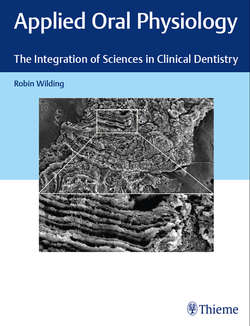Читать книгу Applied Oral Physiology - Robin Wilding - Страница 64
На сайте Литреса книга снята с продажи.
4.2 The Oral Environment
ОглавлениеThe following section will describe the features of the oral environment which support and influence the ecology of the mouth. The oral cavity provides a range of fairly stable habitats for microorganisms. There is a plentiful supply of both oxygen and nutrients, and there are physical surfaces for attachment, although some surfaces are more liable to disruption than others. The oral mucosa, including the tongue and exposed tooth surfaces, is exposed to saliva flow and the disruption caused by shear forces which occur during swallowing and mastication. The surface epithelial cells of the oral mucosa are shed (desquamated) when mature and carry off with them any organisms which have colonized the cell’s surface (▶ Fig. 4.1). This process is particularly important for the health of the gingival sulcus, one of the most highly populated habitats in the oral cavity. This site provides shelter, and a rich supply of nutrients provided by the gingival crevicular fluid flowing out of the gingival sulcus. The cells of the junctional epithelium and gingival sulcus epithelium desquamate regularly, clearing away colonizing organisms. It has been noted in Chapter 3 Oral Mucosa and Periodontium that the turnover period of the junctional epithelium may be only a matter of days.
For those organisms which are able to adhere to the exposed tooth surface, there are large areas to colonize. The sheltered tooth surfaces, such as the approximal areas and occlusal fissures, are more densely colonized than more exposed tooth surfaces, and it is these sites which have the greatest risk of developing dental caries (▶ Fig. 4.2). Oral organisms are unable to attach directly to tooth enamel, but they may adhere via an intermediary layer of proteins, the salivary pellicle.
The presence of a fixed restoration, which has defective margins, and a removable restoration, which covers the oral mucosa, provides a protected environment for organisms which allows the total mass to increase (▶ Fig. 4.3). When the teeth are lost, these habitats disappear and the oral flora is dramatically altered; in general, it is less diverse.
Fig. 4.1 The desquamation of the surface epithelial cells of oral mucosa. (a) A scanning electron microscope (SEM) image of a surface cell which has partly desquamated (magnification × 1,000). (b) A diagrammatic representation of the effect of desquamating epithelial cells on the control of colonization of epithelial surfaces by oral organisms.
